While the first day of the Lunar New Year celebrates all over the world. The history of the celebration varies from culture to culture. The festival, as we know it today, originated in China around 2,000 years ago. The history of the Lunar New Year and its celebration in other East Asian cultures is fascinating.
It is a time to celebrate the new year and make resolutions for the coming year. We will explore the history and significance of the Lunar New Year in other East Asian cultures. We will discuss the traditions and ceremonies associated with the holiday and how it has evolved over the years, by understanding the history of the Lunar New Year. You were able to appreciate its significance and enjoy it more fully each year.
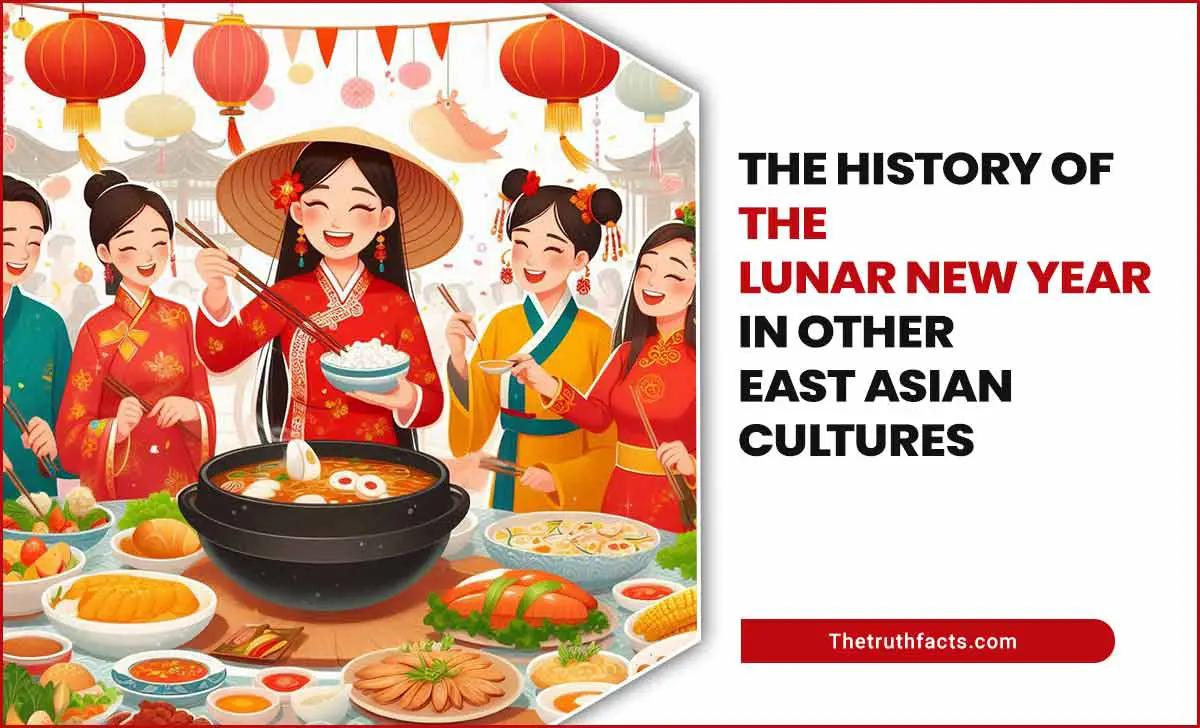
What Is The Origin Of The Lunar New Year?
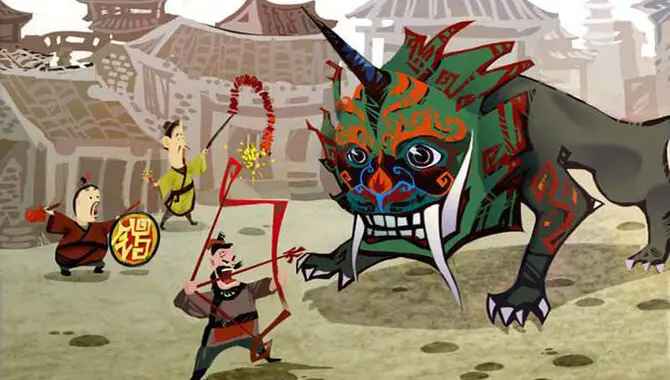
The Lunar New Year a festival celebrates in different East Asian cultures. The festival has its roots in the Chinese lunar calendar, where the year is divided into twelve lunar months. And the new year celebrations are held at the lunar calendar new year.
The new year celebrations of various East Asian cultures are similar and include lanterns, parties, and bonfires. These celebrations outline the importance of balance in life and the idea that everything must have a yin and yang counterpart. These celebrations showcase the relationship between people, nature, and the universe.
The Lunar New Year is a time to reflect on the past year and make resolutions for the coming year. It is also a time to celebrate family and friends, as well as to eat delicious food. The new year celebrations of different countries vary slightly.
Some cultures focus more on traditional dances and costumes while others emphasize lanterns, parties, and fireworks more than anything else. It is a day of celebration for people across the globe as they look forward to new beginnings and better times ahead.
Differences In The Lunar New Year Celebrations Among East Asian Cultures
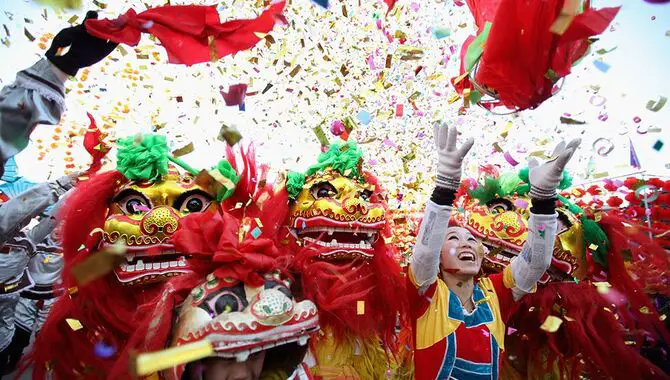
The Lunar New Year is a major holiday in East Asian cultures, marking the new year. The celebrations vary among the different countries and ethnicities of the region, but there are some common features. In many countries, families gather to celebrate the new year together. They might go out on a public holiday or organize family gatherings at home.
During the celebrations, people give money to the poor as a symbol of good fortune and happiness in the coming year. Another common feature is the custom of cleaning up the home and making fresh starts. This symbolizes new beginnings and good fortunes for the year ahead.
In some countries, people also practice ancestral traditions during the new year celebration such as visiting their ancestors’ graves or giving food to the poor as a symbol of good fortune. There are also various customs related to the new year, such as setting resolutions for the year and writing them down on paper or a digital calendar.
This is symbolic of new beginnings and positive thinking toward 2018. The lunar new year is a time to reflect on the past year and make resolutions for the upcoming year. By practicing these cultural traditions during this special time, people can feel more positive about 2018 and have better luck in the new year.
The History Of The Lunar New Year In Other East Asian Cultures: Analysis On

The Lunar New Year is a holiday celebrated by many people in East Asia, mostly in countries that share a common Confucian heritage such as China, Japan, and South Korea. You can trace the history of the Lunar New Year back to China. The first records of the Lunar New Year were written in the 12th century by Chinese scholars who documented the celebrations and rituals of the celebrants.
The celebration of the Lunar New Year was later adopted in Japan and other parts of East Asia, including Korea and Southeast Asia. The reason for this is believed to be rooted in the syncretic nature of this cultures-when. Two or more religions or traditions integrate into one another. This integration created new holidays that celebrate both aspects of life (such as work and family) in harmony with each other.
The Lunar New Year has also been a source of cultural exchange within these regions. For example, dragon dances inspired by Chinese traditions have become popular among Japanese communities in Southeast Asia. Overall, the tradition has helped maintain a sense of identity for people across different regions of East Asia by creating shared holidays and traditions that transcend geographical boundaries.
How Is The Lunar New Year Celebrated In Different East Asian Cultures?
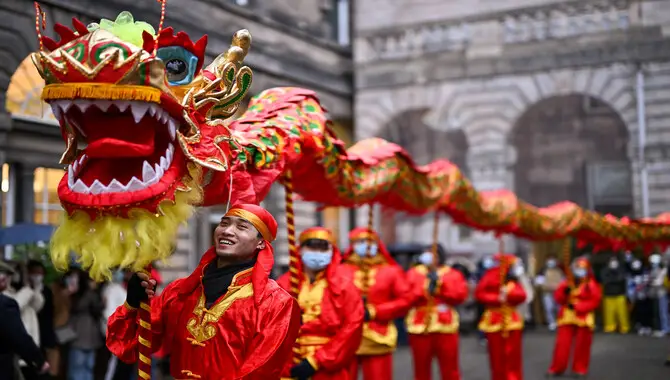
The Lunar New Year is a major holiday in China, Japan, Korea, and Vietnam. Each country has its unique way of celebrating the Lunar New Year. This year, the celebration of the festival has grown to include various cultural traditions. These include the new year’s eve eat-drink vigil, the new year’s lanterns parade, the lion dance performance, and the new year’s luncheon banquet.
The new year’s eve eat-drink vigil consists of family and friends gathering around a table to celebrate the new year with food and drink. In China, new year lanterns are often made of paper or cloth and are commonly red or white in color and feature traditional Chinese symbols.
The new year luncheon banquet is a celebratory meal that includes dishes such as dumplings, rice cakes, soup, and other traditional fare, as well as a fruitcake and herbal tea. The Lion Dance performance is a traditional folk dance that features dancers wearing lion costumes as they move their bodies to the beat of drums.
After all these cultural traditions have been observed, people reflect on the past year as a way to make resolutions for the year ahead. They also spend time discussing plans for family gatherings and gatherings with friends. Finally, they celebrate the new year by throwing parties and watching fireworks.
What Are The Major Celebrations During The Lunar New Year?
The Lunar New Year is a time of celebration and family togetherness. The holiday is marked by the setting of the full moon on the first day of Chinese New Year and is celebrated with special customs and traditions throughout Asia, including celebrations centered on food, Lanterns, and money.
The festival also marks by major celebrations held throughout the region. Including parades and festivals in which people dress in traditional costumes to celebrate their culture. In Singapore, for example, the Singaporean community comes together to celebrate with colorful parades through neighborhoods and parks. The holiday also celebrates with cultural performances such as dragon and lion dances and open houses where families gather to share food.
Beyond celebrations held in communities, the Lunar New Year is also an opportunity for people to reconnect with loved ones and reflect on their past year. The holiday provides a time for individuals to celebrate their heritage and traditions while bringing them together as a community. Overall, the Lunar New Year is a time for people to come together and celebrate life’s rich diversity.
Why Is The Lunar New Year Considered To Be A Special Year?
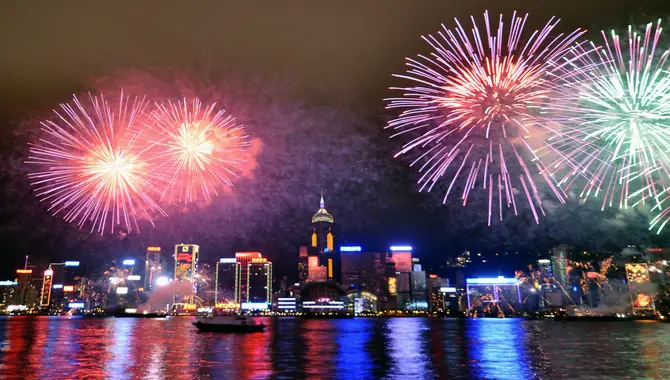
The Lunar New Year is when families and friends come together to celebrate the passing of the old year and the arrival of the new. The lunar new year is also a time to reflect on past years and prepare for the future. The lunar new year is a time for honoring ancestors and seeking their blessings for the coming year.
It is also a time to honor the natural world and sweep away any bad luck from the past year. This holiday is a celebration of family, friendship, happiness, good fortune, and prosperity. It is also a time to eat delicious foods, drink lots of wine, and spend time with loved ones. The lunar new year considers a special year for people as it brings in many fun-filled activities such as preparing a new year feast, decorating new year’s eve parties with new year’s decorations, etc.
The lunar new year provides an opportunity to renew our goals, aspirations, and desires as this festival brings in new energy which can help us achieve our goals and make better use of each day of the year. Enthusiastic people enjoy new year celebrations as it represents optimism and hope that good times are ahead.
What Is The Significance Of The Lunar New Year In Other East Asian Cultures?
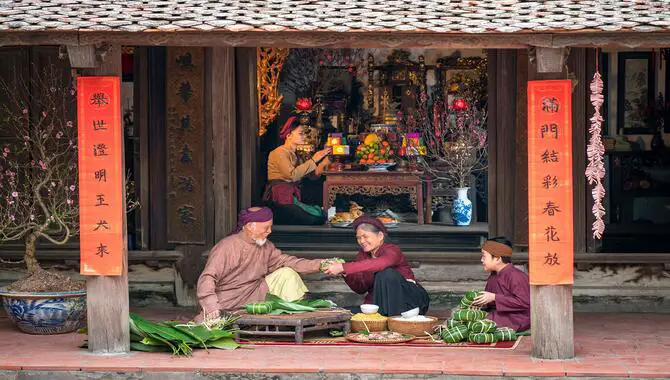
The Lunar New Year is a time of year celebrated by people in many parts of the world. With customs surrounding the festival vary from culture to culture. In East Asia, the year of the rabbit is often seen as a year of prosperity and good fortune. As rabbits know for their ability to adapt and survive in any condition, despite its lunar namesake. The Lunar New year also associates with luck and fortune. As it believes this year will be good for everyone.
The festival is a time for people to reflect on past successes and grieve losses. It is a time to connect with family and friends across the globe as the new year heralds new beginnings. Families gather to celebrate the new year together as they do on the day of the lunar new moon.
Celebrations vary across cultures, but common elements observe throughout East Asia. The new year is a time to celebrate life and all that is good in the world. The lunar new year has become an important part of modern culture, with people worldwide marking it. It as a day to recognize and celebrate ethnic diversity through cultural festivals.
What Are The Main Traditions During Lunar New Year In Other East Asian Cultures?
In China, Lunar New Year also knows as the ‘Spring Festival’ or the ‘Festival of the Rabbit.’ This festival celebrates as a symbol of new life and good fortune. The year’s first day celebrates as the Lantern Festival, where people light lanterns and pray for good luck and happiness. In Japan, it knows as the ‘Year-End Festival,’ a time to celebrate the new year after the winter solstice. It celebrates new beginnings and new opportunities. During this festival, people write their wish lists and make resolutions.
In South Korea, it calls ‘Chuseok,’ which means harvest season or harvest day. It’s a day to celebrate the spring, summer, autumn, and winter harvesting seasons. People go around their neighborhood singing songs and eating traditional foods like kumkum cake and tongue (a rice cake soup). Thailand’s ‘Songkran’ festival knows as Thaipusam or Water festival. This festival marks the Hindu god Rama’s journey from Ayutha to Lanka on the back of an elephant Garuda with his followers in tow.
How Do These Events Reflect The Changing Of The Year?
The Lunar New Year is a time to reflect on the year past and prepare for the year ahead. Other cultures worldwide have celebrated the new year in various ways. From eating special foods to visiting family and participating in traditional festivities. The new year is also a time to make resolutions for the year ahead. Many East Asian cultures believe that the new year can bring good luck and prosperity to the household.
In addition to celebrating with family and friends, people often make New Year’s Resolutions to set goals for the coming year. These events are an opportunity to unite as a community and celebrate life. The lunar new year celebrations are an opportunity to reflect on the year past and look forward to a bright new year filled with opportunities and adventures ahead.
The Impacts Of The Lunar New Year On Different East Asian Cultures
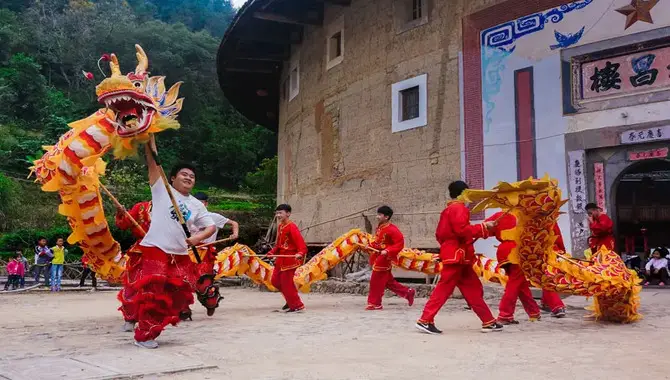
The Lunar New Year is a significant cultural and religious holiday in East Asian countries such as China, Japan, and South Korea. The festival is based on the lunar calendar, varying from country to country. The celebration of the Lunar New Year varies based on the different traditions of each country.
In China, the festival knows as the Chinese New Year or the CNY. It is a time to reflect on the past year and make new year resolutions for the year to come. In Japan, the festival call ‘Ganbiki’ marks the beginning of a new year. This day celebrates traditional festivals and ceremonies that vary from region to region.
The Lunar New Year has a significant impact on businesses as well as households in East Asian countries. It is a time for families and friends to gather and celebrate together. The festival also allows businesses to ring in the new year with parties and celebrations nationwide. The financial year also begins on this day, so it impacts banks as well as stock markets.
Conclusion
The Lunar New Year is celebrated all over the world. It’s one of the most important traditions in Asian culture, and people of all ages love it. The festival starts as a day of celebration for the new year and new life, while it also acts as a time to clean the house, offer sacrifices to ancestors, give thanks, and celebrate family or community ties. The celebration of the Lunar New Year is large base on changing the year and following the lunar calendar as a guide for festivals.
It believes that celebrating the festival year after year ensures good fortune and prosperity for themselves, their families, and their communities. We have explored the history of the Lunar New Year in other East Asian cultures and how it has evolved over the years. By learning about the traditions surrounding Lunar New Year, you will better understand this important holiday and its significance to people across the region.
Frequently Asked Questions:
1.How Did These Other East Asian Cultures Celebrate Lunar New Year?
Ans: There are a few different ways that different East Asian cultures celebrate the Lunar New Year. In China, Japan, South Korea, Vietnam, and other East Asian cultures, the Lunar New Year is a major holiday. Families typically gather together to celebrate the new year and give gifts to one another.
2.What Are Some Examples Of Traditional Lunar New Year Celebrations In Other East Asian Countries Such As Korea, Japan, Or Vietnam?
Ans: Here are some examples of traditional Lunar New Year celebrations in other East Asian countries such as Korea, Japan, and Vietnam.
Korea: The Lunar New Year celebrates various festivals and activities, such as family reunions and dragon boat races. And ceremonial food preparation.
Japan: There are numerous traditional ceremonies and rituals related to the New Year, such as calligraphy exhibitions, archery contests, and shrine visits.
3.How Was The Lunar New Year Celebration First Introduced To East Asia?
Ans: The Lunar New Year celebration has a long and varied history, starting from the 6th century BC in China. During that time, the first recorded lunar new year celebration heel. The celebration later spread to Korea, Japan, and Vietnam. Today, people across East Asia celebrate the Lunar New Year celebration.
4.What Are The Main Traditions Associated With The Lunar New Year In Other East Asian Cultures?
Ans: The Lunar New Year a major festival celebrates in various East Asian cultures. The traditions associated with the Lunar New Year vary depending on the culture. Still, some of the most common include family reunions, and eating special foods. And giving thanks for blessings received during the year. It’s also a time to reflect on past years and prepare for the coming year.
5.How Does The Lunar New Year Celebration Differ From Other East Asian Holidays?
Ans: The Lunar New Year celebration is a day-long event typically occurring at the beginning of the year. This holiday is unique to East Asian cultures and celebrates the new year. Several traditions associates with the Lunar New Year celebration, including making symbolic offerings to ancestors, cleaning and decorating homes, and eating special foods.

I’m a writer and blogger who loves to talk about entertainment, culture, and relationships. I love to share my thoughts and insights on these topics, and I’m always looking for new ways to engage with my readers. I’m also a big fan of learning new things, so I’m always exploring new areas of interest.
